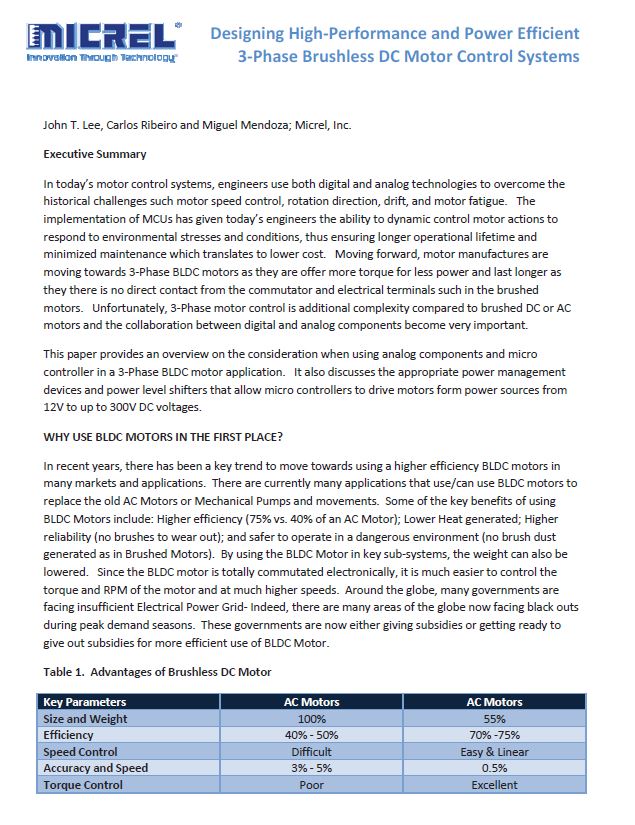
In today’s motor control systems, engineers use both digital and analog technologies to overcome the historical challenges such motor speed control, rotation direction, drift, and motor fatigue. The implementation of MCUs has given today’s engineers the ability to dynamic control motor actions to respond to environmental stresses and conditions, thus ensuring longer operational lifetime and minimized maintenance which translates to lower cost. Moving forward, motor manufactures are moving towards 3-Phase BLDC motors as they are offer more torque for less power and last longer as they there is no direct contact from the commutator and electrical terminals such in the brushed motors. Unfortunately, 3-Phase motor control is additional complexity compared to brushed DC or AC motors and the collaboration between digital and analog components become very important. This paper provides an overview on the consideration when using analog components and micro controller in a 3-Phase BLDC motor application. It also discusses the appropriate power management devices and power level shifters that allow micro controllers to drive motors form power sources from 12V to up to 300V DC voltages.
Advertisement
Learn more about Micrel





